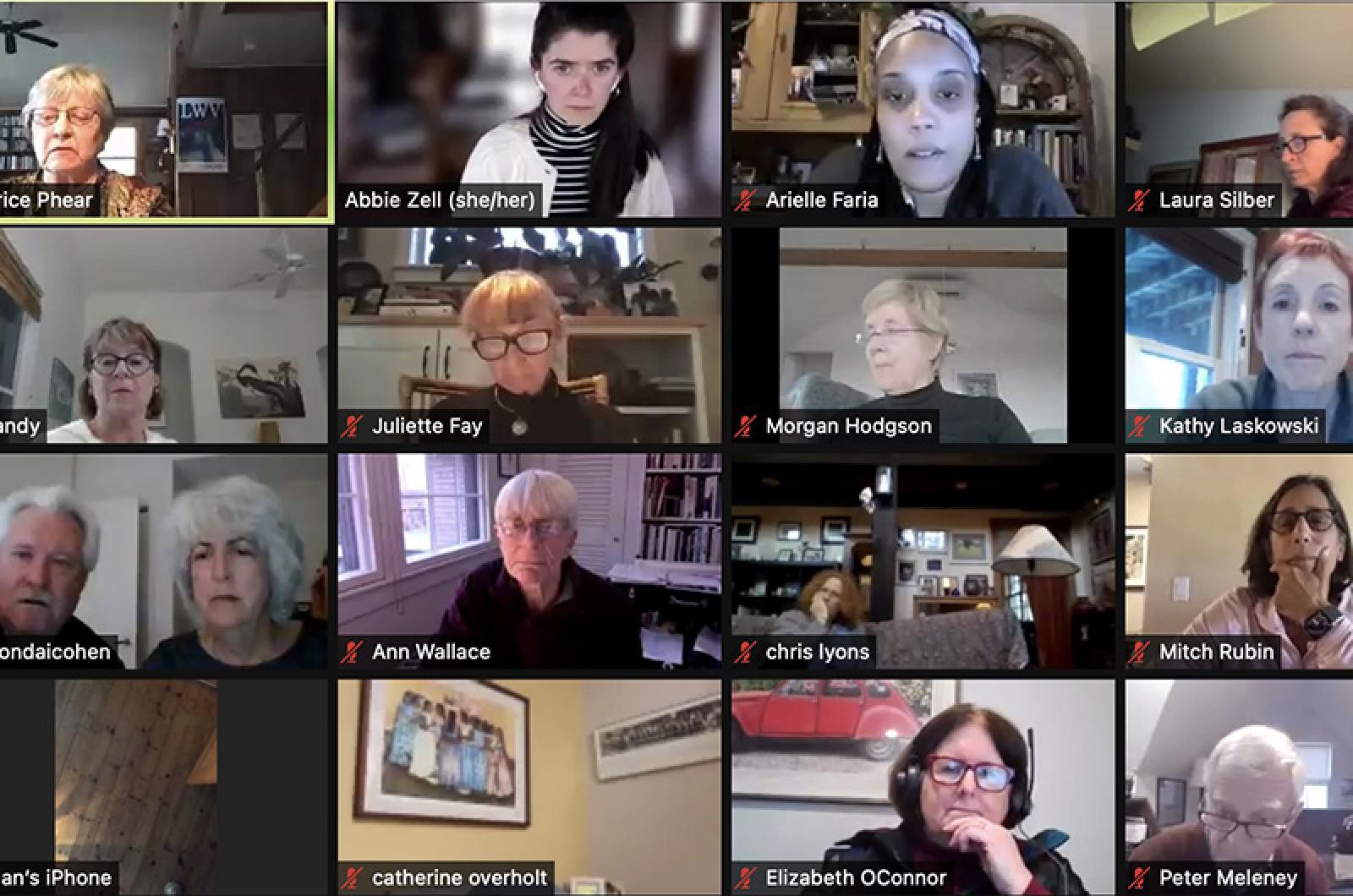With the pivotal question of whether to create a Martha’s Vineyard housing bank on the table as annual town meetings and elections draw near, Islanders weighed in with concerns, comments and questions at an online forum hosted by the League of Women Voters Wednesday night.
Nearly 100 people logged into the Zoom meeting, which was moderated by the League. Members of the Coalition to Create a Martha’s Vineyard Housing Bank, the advocacy group campaigning for the housing bank, took center stage to answer questions that were read aloud from the Zoom chat.
The housing bank will appear as a question both on town meeting floors and in ballot boxes this spring, in a first step that would subsequently lead to passage by the state legislature. If all those hurdles are cleared, the question would return to voters for a final vote in the ballot box. Organizers hope to see the bank in place by 2023.
Modeled after the Martha’s Vineyard Land Bank, the housing bank would collect a buyer-paid two per cent transfer fee on most real estate transactions that fall above $1 million. The money would be distributed in the form of grants for affordable housing projects on the Island. A seven-member elected Islandwide commission would manage the bank, with appointed town advisory boards in place as well.
In order to qualify for affordable housing under the housing bank, applicants would have to earn within 240 per cent of the area median income. For a family of four, that limit is about $250,000 a year.
On Wednesday night coalition members fielded a wide array of questions on everything from the bank’s structure to who would be eligible for affordable housing.
One person asked what would happen if someone who qualifies for affordable housing through the housing bank subsequently reaches an income over the qualifying limit. Would they have to relocate out of a deed-restricted affordable home?
“They absolutely do not have to leave,” coalition steering committee co-chairman Arielle Faria said. But if the house is sold, the next buyers would have to qualify based on income, she said.
Rental properties created using housing bank funds would be deed restricted for year-round use by qualifying Islanders.
“Can you tell us who will monitor compliance?” asked Meg Higgins.
Coalition coordinator Laura Silber said the housing bank commission would be in charge of compliance, using hired staff.
Another point of discussion revolved around whether creating more available housing through the housing bank would have the unintended consequence of attracting more people to the Island, especially given the current trend toward remote work.
In short, coalition members said people who already live on Island and work remotely will be eligible for housing created by the housing bank. But anyone who wants to move to Martha’s Vineyard will be required to have an Island employment contract in hand in order to be eligible, they said.
Coalition members acknowledged that remote work is increasing and likely to grow. But they also pointed to rapid turnover rates at Island fire departments and schools, who spend money to train employees only to see them lose their housing a year or two after moving to the Island.
Coalition members also pointed to the robust popoulation of workers who commute to the Island for work, and likely don’t put the money they earn back into the Martha’s Vineyard economy. Asked about the number of people who commute to the Island each day, coalition member Doug Ruskin said he found through Steamship Authority data last year that an average of 325 commuter tickets were used each day — not counting those who commute using individual ferry tickets.
“So the answer is hundreds,” he said.
Many who attended sought more clarification on the lengthy, densely-worded draft legislation. Others questioned the potential effect on property taxes. Coalition members said they believed the impact would be negligible.
Annual town meetings kick off on April 12 in four Island towns: Edgartown, Oak Bluffs, Tisbury and West Tisbury. League spokeswoman Beatrice Phear urged everyone to participate.
Corrected from an earlier version that stated the qualifying income ceiling would be 250 per cent of AMI. The correct number is 240 per cent.






Comments (32)
Comments
Comment policy »